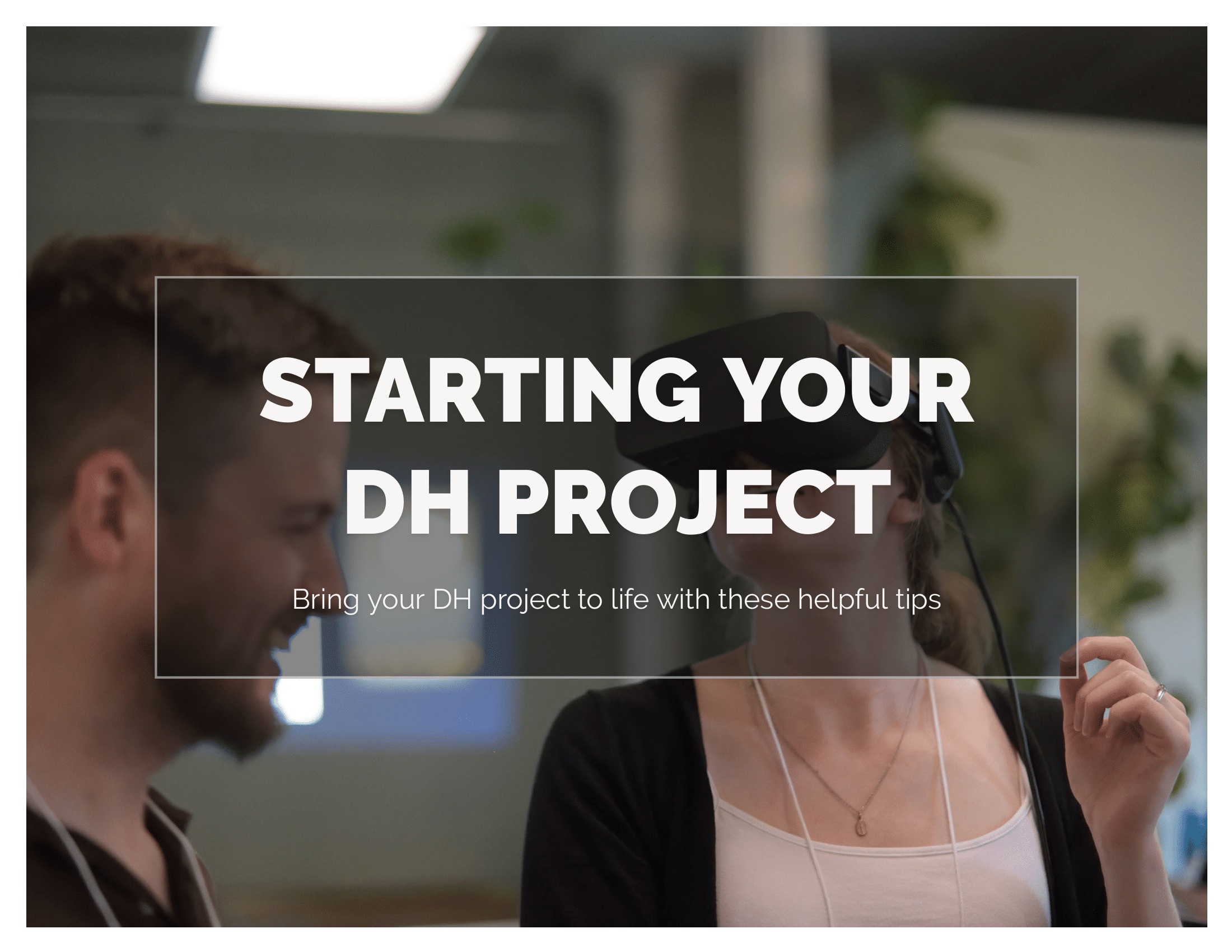
Whether you are executing a DH project for a course or simply for your own research, the below guidelines will help you get started. Here's the Quick-start checklist!
● Identify your dataset ● Select methodology ● Choose your tool ● Execute your project ● Present your project ●
DH Project Guidelines
1. Identify a dataset (or datasets).
In many elective courses, your instructor will provide a dataset.
From the papers of George Washington to archives of late nineteenth-century maps, there is online data available in every research area within the discipline. Your first step, then, is locating data that interests you. (Alternatively, you may have already have unique dataset of your own, or your instructor may provide a dataset.)
Remember that data comes in all forms. It can be textual (books, ephemera, letters, manuscripts, newspapers, periodicals, and transcripts), visual (artworks, blueprints, illustrations, maps, photographs, or films), or auditory (music, recordings, and speeches).
If this is your first DH project, you might want to stick to one dataset or type, although there are some rich possibilities when you mix and match. For example, if you are investigating the national response to the Civil Rights Movement, you could gather datasets of American news articles and personal letters between key political figures, and compare the public and private conversations about the Movement. Once you have located your dataset(s), in most cases you should save it in a widely-accepted format (e.g. .csv, .txt, or .xml)
2. Select your research methodology.
Your data type will largely determine your methodology. For example, if you are using map data, then visualization is a strong option. If you are analyzing linguistic changes over a period of time, however, then computational textual analysis is more fitting (although you may decide to visualize your results later on to highlight linguistic trends more clearly). Use the following diagram as a guide to decide what approach you want to take with your data:

For certificate program students, this stage is a good time to approach your professor and Dr. Rennie Mapp for advice, and to submit an MoU about the type of DH project that you want to complete.
3. Choose your tool, and learn how to use it.
Your next step is choosing a tool for your investigation, and then learning how to use it. Two UVA-developed tools that have been especially useful for past historians are:
-
VisualEyes: a platform that allows researchers to weave together different data types to create dynamic visualizations.
-
MapScholar: a platform that allows researchers to create visual atlases.
For more, you can consult our list of Tools and Resources. (This is under construction.)
After choosing your tool, familiarize yourself with its features, and check that the tool supports the data types that you have chosen. Many digital tools often provide informative documentation or tutorials to help you through this stage, although you can also consult the DH Calendar to see if anyone is hosting a workshop on the tool that you have selected.
4. Execute your project
After learning how to use your tool, you can execute the project. Upload your data onto the platform, and begin your analysis. (You might find that you already started executing your project when you were learning how to use the tool that you chose.)
5. Present or submit your project (for DH Certificate participants)
In your MOU, you and your professor will have reached an agreement on how to submit your digital project to satisfy the course requirements, whether as a direct link to your online project, through a research paper about your results or some other format—so please ensure that you have fulfilled your professor’s expectations.
